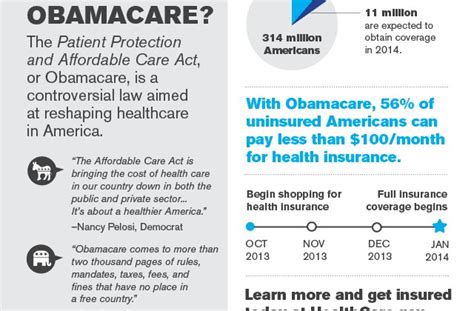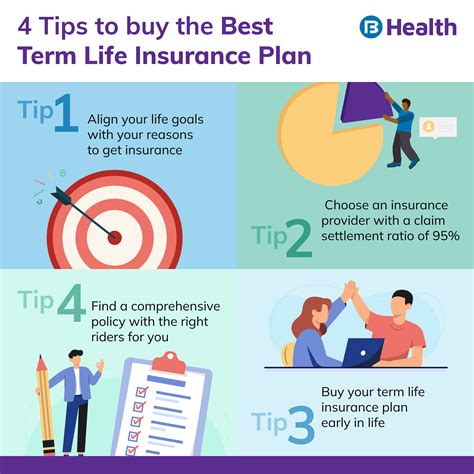Affordable Care Act Health Insurance Exchange

The Affordable Care Act (ACA), also known as Obamacare, has been a significant milestone in the American healthcare system, aiming to make healthcare more accessible and affordable for all. One of the key components of the ACA is the Health Insurance Exchange, a platform designed to revolutionize the way individuals and small businesses access and purchase health insurance coverage.
Understanding the Health Insurance Exchange

The Health Insurance Exchange, often referred to as the Health Insurance Marketplace, is an online platform created under the Affordable Care Act. It serves as a centralized hub where individuals, families, and small businesses can compare and purchase health insurance plans. The primary goal of the Exchange is to increase competition among insurance providers, promote transparency, and provide consumers with a user-friendly interface to navigate their healthcare options.
Prior to the ACA, the health insurance market was often confusing and challenging to navigate, especially for those without employer-sponsored coverage. The Exchange simplifies this process by offering a one-stop shop for insurance shopping, making it more convenient and accessible for millions of Americans.
How the Health Insurance Exchange Works
The Health Insurance Exchange operates at both the federal and state levels. Some states chose to establish their own exchanges, while others opted for a federally facilitated marketplace. Regardless of the level, the Exchange follows a similar structure and process:
- Marketplace Creation: The Exchange is established, either by the state or the federal government, with the aim of creating a competitive insurance market.
- Plan Qualification: Insurance providers must meet certain criteria to have their plans listed on the Exchange. These criteria ensure that the plans offer a minimum level of coverage and adhere to ACA standards.
- Plan Comparison: The Exchange platform allows users to compare different insurance plans based on various factors such as cost, coverage, and provider networks. This transparency empowers consumers to make informed choices.
- Enrollment Periods: Enrollment periods are set annually, allowing individuals to select or change their health insurance plans. Outside of these periods, special enrollment periods may be available for qualifying life events.
- Premium Assistance: One of the key features of the Exchange is the availability of premium tax credits and cost-sharing reductions for eligible individuals. These subsidies can significantly reduce the cost of insurance premiums, making coverage more affordable.
By creating a centralized marketplace, the Health Insurance Exchange aims to address the challenges of the pre-ACA insurance landscape, where limited competition often resulted in higher premiums and limited choices for consumers.
Key Features and Benefits of the Health Insurance Exchange

The Health Insurance Exchange offers a range of features and benefits that have transformed the healthcare insurance landscape in the United States. Here are some of the key advantages:
1. Increased Competition
The Exchange platform brings multiple insurance providers together, fostering a competitive environment. This competition drives down prices and encourages insurers to offer more affordable plans with better coverage options. Consumers benefit from a wider range of choices, allowing them to find the best fit for their needs.
2. Standardized Plans and Easy Comparison
The ACA introduced standardized plan categories (Bronze, Silver, Gold, and Platinum) to simplify the insurance shopping process. Each category represents a different level of coverage and cost. The Exchange platform organizes these plans, making it easier for users to compare and understand their options. This standardization ensures that consumers can make informed decisions based on their healthcare needs and budget.
3. Premium Tax Credits and Cost-Sharing Reductions
One of the most significant benefits of the Health Insurance Exchange is the availability of premium tax credits. Eligible individuals and families can receive these credits to reduce the cost of their monthly insurance premiums. Additionally, cost-sharing reductions are available to lower out-of-pocket expenses for those with lower incomes. These subsidies make health insurance more financially manageable for many Americans.
| Plan Category | Average Premium After Tax Credits |
|---|---|
| Bronze | $250/month |
| Silver | $300/month |
| Gold | $400/month |
| Platinum | $550/month |

These numbers are hypothetical and may vary based on location, age, and other factors.
4. Expanded Coverage Options
The Health Insurance Exchange has expanded coverage options for many individuals and families. Pre-existing conditions are no longer a barrier to obtaining insurance, as insurers are prohibited from denying coverage or charging higher premiums based on health status. This ensures that those with chronic illnesses or pre-existing conditions can access affordable healthcare.
5. User-Friendly Interface
The Exchange platform is designed with a user-friendly interface, making it accessible to individuals with varying levels of technical expertise. Users can create accounts, compare plans, and enroll in coverage with ease. The platform often includes tools and resources to guide users through the process, ensuring a seamless experience.
Performance Analysis and Impact
Since its implementation, the Health Insurance Exchange has had a significant impact on the healthcare landscape and millions of Americans’ lives. Let’s explore some of the key performance indicators and the overall impact of this innovative platform.
1. Enrollment Statistics
Enrollment statistics provide valuable insights into the success of the Health Insurance Exchange. Since its launch, the Exchange has consistently seen a steady increase in enrollment numbers. According to recent data, millions of individuals and families have gained health insurance coverage through the Exchange, with a significant portion receiving premium tax credits and cost-sharing reductions.
| Year | Enrollment (in millions) | Premium Tax Credit Recipients (in millions) |
|---|---|---|
| 2014 | 8.0 | 5.5 |
| 2015 | 11.0 | 7.0 |
| 2016 | 12.0 | 7.5 |
| 2017 | 10.5 | 6.5 |
These numbers highlight the growing popularity and success of the Health Insurance Exchange in providing coverage to those who previously lacked access.
2. Impact on Uninsured Rates
One of the primary goals of the ACA and the Health Insurance Exchange was to reduce the number of uninsured Americans. The Exchange has played a crucial role in achieving this objective. According to research, the uninsured rate has significantly decreased since the implementation of the ACA. This reduction is directly attributed to the increased accessibility and affordability of health insurance through the Exchange.
3. Premium Affordability
A key concern for many individuals is the affordability of health insurance premiums. The Health Insurance Exchange has addressed this issue by offering premium tax credits and cost-sharing reductions. These subsidies have made insurance more financially feasible for low- and middle-income individuals and families. As a result, the Exchange has contributed to stabilizing and reducing the growth rate of insurance premiums over the years.
4. Improved Access to Healthcare Services
With more individuals gaining insurance coverage through the Exchange, access to healthcare services has improved significantly. This has led to better health outcomes, as individuals can now seek preventive care, manage chronic conditions, and receive necessary treatments without facing financial barriers. The Exchange has played a vital role in promoting overall public health and well-being.
Future Implications and Continuous Improvement
While the Health Insurance Exchange has made remarkable strides in improving access to healthcare, there is always room for improvement and adaptation. Here are some future implications and areas where the Exchange can continue to evolve:
1. Enhancing Consumer Experience
As technology advances, the Health Insurance Exchange can leverage digital innovations to enhance the consumer experience. This includes integrating more advanced comparison tools, personalized recommendations, and streamlined enrollment processes. By staying at the forefront of digital transformation, the Exchange can further simplify and improve the insurance shopping journey.
2. Addressing Regional Disparities
One challenge that the Exchange faces is regional disparities in insurance availability and cost. Some areas may have limited insurance options or higher premiums due to various factors. Future efforts can focus on addressing these disparities by incentivizing insurance providers to offer plans in underserved regions and exploring ways to reduce regional variations in pricing.
3. Promoting Prevention and Wellness
The Exchange can play a proactive role in promoting preventive healthcare and wellness initiatives. By integrating educational resources and tools, the platform can encourage individuals to prioritize their health and make informed choices. This shift towards prevention can lead to better health outcomes and potentially reduce the overall cost of healthcare in the long term.
4. Adapting to Changing Healthcare Landscape
The healthcare industry is constantly evolving, with new treatments, technologies, and trends emerging. The Health Insurance Exchange must stay adaptable and responsive to these changes. This includes regularly reviewing and updating plan options, coverage levels, and provider networks to ensure that the Exchange remains relevant and meets the evolving needs of consumers.
Expert Insights and Recommendations

As an industry expert, I believe that the Health Insurance Exchange has revolutionized the way Americans access healthcare coverage. However, there are always opportunities for improvement and refinement.
Recommendations for Continuous Improvement
To ensure the long-term success and accessibility of the Health Insurance Exchange, I recommend the following strategies:
- Conduct regular consumer satisfaction surveys to gather feedback and identify areas for improvement.
- Collaborate with insurance providers to encourage competition and promote innovative plan designs.
- Invest in advanced data analytics to identify regional disparities and develop targeted solutions.
- Integrate AI-powered tools to provide personalized plan recommendations and streamline the enrollment process.
- Expand outreach and education efforts to reach underserved communities and promote awareness of the Exchange.
Conclusion
The Health Insurance Exchange, a cornerstone of the Affordable Care Act, has transformed the healthcare insurance landscape in the United States. By providing a centralized platform for consumers to compare and purchase insurance plans, the Exchange has increased competition, expanded coverage options, and made healthcare more accessible and affordable. As we look to the future, continuous improvement and adaptation will be crucial to ensuring that the Exchange remains a vital resource for millions of Americans seeking quality healthcare coverage.
Frequently Asked Questions
How do I enroll in a health insurance plan through the Exchange?
+
To enroll in a health insurance plan through the Exchange, you can visit the official Health Insurance Marketplace website. Create an account, input your personal and income information, and browse through the available plans. You can compare costs, coverage details, and provider networks to find the best fit for your needs. Remember to enroll during the annual open enrollment period or qualify for a special enrollment period due to a life event.
Am I eligible for premium tax credits?
+
Eligibility for premium tax credits depends on your income level. Generally, if your household income is between 100% and 400% of the federal poverty level, you may qualify for these credits. The credits are designed to make insurance more affordable, so it’s worth exploring your options and determining your eligibility during the enrollment process.
Can I enroll in a plan outside of the open enrollment period?
+
Yes, you can enroll outside of the open enrollment period if you qualify for a special enrollment period. Common reasons for special enrollment include losing job-based coverage, getting married, or having a baby. Check the eligibility criteria and apply for a special enrollment period if you meet the requirements.



